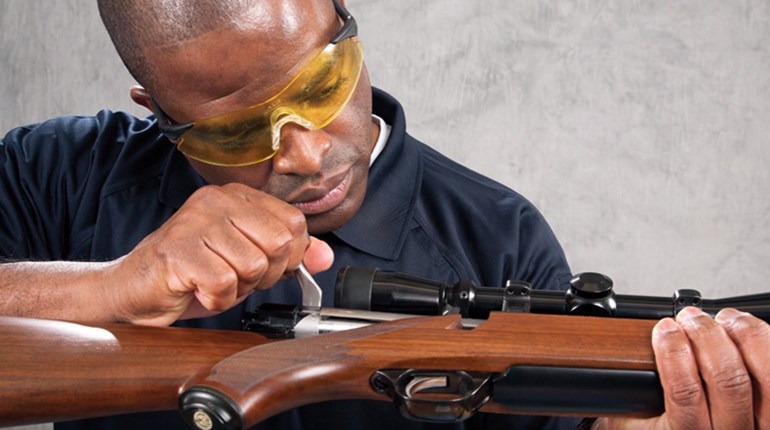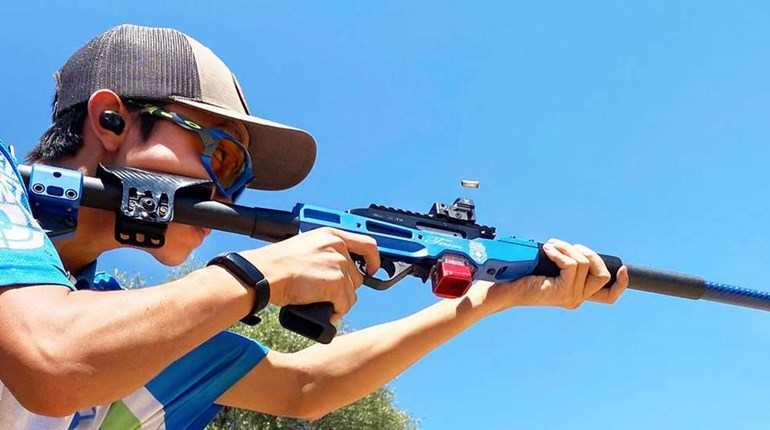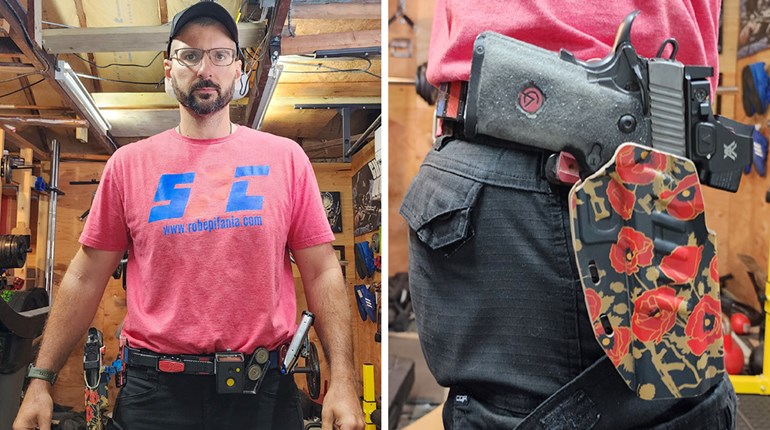
With Halloween just around the corner, the season of phantasm is upon us. Freaky, creepy and undeniably imaginative, the costumes (and cosmetics) seem to get more intricate every year. Here and there, a dab of legitimate spine-tingling meets whimsy and spooky traditions and superstitions, all making for fine, neighborly evenings. On many a be-pumpkined front porch, little witches and goblins get smiles and fistfuls of dentist-unapproved goodies. We like it.
But we’re also recently returned from USPSA Open/Limited 10 Nationals, and this got us thinking about another tradition, or rather superstition—the widespread notion of pervasive firearms incompetence, especially by civilians. We’ve touched on this several times in Carry Life (here and here, for instance), but the belief seems persistent in the non-shooting public.
We’d be astonished, however, if anyone could leave a competition of this type with such a notion even remotely intact. In other words, there has never been a direct bullet-caused injury—much less any fatality—at a USPSA match over the decades it and its predecessor organizations have been operating.
These are grueling and technical events: Humid central Florida temperatures hovered in the high 80s and low 90s as shooters hustled through seven “stages” (arrays of targets) per day (a normal local match is four to six), and a total round count of 433. A very few of those shots were arms-length child’s play, but a bunch were at 25 yards and beyond, including numerous rapidly moving targets. The course of fire demands extensive navigation around and over obstacles, unconventional or downright difficult shooting positions, and masses of dreaded “no-shoots”—theoretic bystanders, hits upon whom are punished at up to four times the point value of a single “good” hit.
All stages are shot under time pressure, too: Top performers are often generating nearly two “A” (the best) hits per second regardless of the length or complexity of the shot, and even the mediocre (us) about half that fast, all while moving and reloading (a lot of this in some competitive divisions, not so much in others). Sounds like a formula for disaster, according the mainstream media and “antis,” right?
Not hardly.
First, get it through your head—or preferably through some anti-gunner’s—that the participants are by no means all military or police shooters. While it’s true that some have that background to a greater or lesser degree, when asked, few will declare it. There are lots of intertwined reasons for this, but mainly it’s because it doesn’t matter: Top shooters come from amazingly diverse backgrounds, period. (While we’re at it, let’s put a seasonal stake through another superstition’s heart—the “old white guy” thing. A full 80 percent are neither “senior” nor “super senior.” Ten percent are women, and slightly over 5 percent are juniors.)
Second, this is by no means a bunch of good ol’ boys that wink and nod at any old “run and gun.” Simply, safety is brutally enforced, with 10 match disqualifications for safety infractions this time around. You read that right: Any safety infraction puts a competitor out of the entire match. Mind that it’s easy to draw the wrong conclusion here: “Well, of course it’s safe then, with all the supervision!”
There are a couple of reasons that just doesn’t fly. For one, Nationals shooters don’t shoot just one big match, and train by themselves the rest of the time. They shoot local matches with friends and family at hundreds and hundreds of clubs around the country where the same rules are self-administered. No matter what a shooter’s background (or excuse), safe gun handling—not just safe shooting—is demanded of them every time they come out to play. Channel your inner Yoda: “A habit, it becomes.”
And those habits and skills are where the superstition of civilian incompetence goes to die. In the car, at work or at home, there is just no evidence that competence disappears. There’s every reason to believe that safe, skilled use on the range translates to every other aspect of firearms ownership (as repeated studies/reports show, a recent one here).
Maybe it’s no wonder, then, that of the nearly 140,000 rounds at L10/Open Nationals, there wasn’t a single bullet wound. That’s only the beginning: We asked USPSA to give us a number, even a rough one, of how many rounds had been shot in their matches per injury. While polite, they were a little flummoxed. Apologetically, they said they really couldn’t generate a number, because, well, they didn’t know of any. More than likely, what they “know” isn’t known at all: It’s a media, movie, mantra mishmash that is meant to deceive, meant to beguile, meant to seem compassionate and precautionary.
What?
In other words, there has never been a direct bullet-caused injury—much less a fatality—at a USPSA match over the decades it and its predecessor organizations have been operating. In case you’re bad at math, here’s our low-ball estimate just since the turn of the 21st century: An average of 400 clubs, holding nine matches a year, at which 35 shooters shoot 110 rounds means nearly 208 million rounds! With all due respect, we wonder if any other organization could remotely make such a claim, and we wouldn’t want to embarrass them by asking.
It’s important to point out that a high percentage of those many millions of rounds weren’t fired by Nationals-ready shooters either: that number includes many thousands of matches by relative beginners, who nevertheless seem to bring their safety performance up to that same stratospheric high standard, even at the cost of a DQ or two. We tend to forget the power of the excellent example.
After more than a fifth of a billion rounds, we would think that the point makes itself: The next time you hear someone criticize the non-military, non-law enforcement, “non-professional” shooter, be sure that they don’t have the vaguest notion of what they are talking about. USPSA’s phenomenal record strikingly refutes what they think they know. More than likely, what they “know” isn’t known at all: It’s a media, movie, mantra mishmash that is meant to deceive, meant to beguile, meant to seem compassionate and precautionary.
It ought—finally—to be clear that the idea of a good guy with a(n unofficial) gun who is incompetent by definition can’t withstand serious scrutiny: It has every characteristic of a superstition. Note this isn’t any sort of carte blanche: It’s still your responsibility to be observant, to keep training and to abide by the law. But as Stevie Wonder told us long ago, “When you believe in things that you don’t understand, then you suffer. Superstition ain’t the way.” Not the way to personal safety, and certainly not to public policy that upholds and preserves the Bill of Rights.
Now Carry on.


































